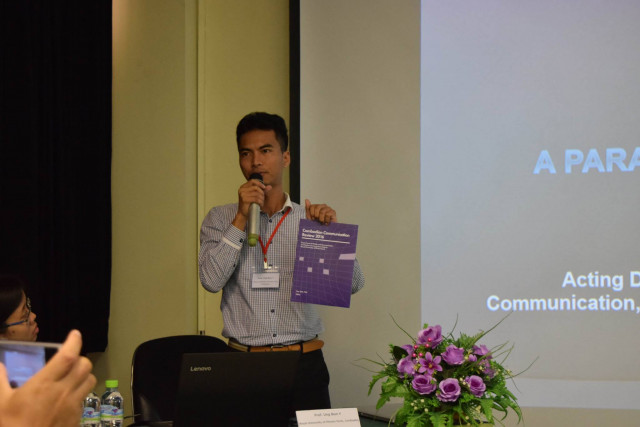Debt Risks Should be Mentioned to Borrowers before Lending

- By Ou Sokmean
- January 28, 2024 9:00 AM
PHNOM PENH — Beside fulfilling the roles and responsibilities set out in the code of conduct, including the rules of responsible lending, banking and microfinance institutions must also explain debt risks to borrowers before lending, according to finance consultant Sim Phirun.
Phirun, who is chief financial advisor for CoGen HR, Management Academy and Consulting Group, said the banking and microfinance institutions should distribute information widely to help people develop financial literacy, and also clearly explain debt risks to borrowers before lending as there are technical words used by each banking institution that the general public may not understand.
When lending to borrowers for up to 25 years and loan sizes are up to 70 percent of a borrowers’ income, debt risk is quite inevitable for them as they repay their loans, he explained during an interview.
Ou Sokmean: What are the risks that borrowers face when repaying loans to the bank?
Sim Phirun: For instance, if we have an income of $1,000, but we have to repay $700 to the bank, when an unexpected loss of income happens, it would affect our ability to repay. When it comes to repaying loans, borrowers are not really careful. To satisfy their needs regarding buying a house or other stuff, they are willing to face payments even if the loans are a lot.
Most borrowers expect their income will increase in the future and have no further consideration about unexpected risks. At the end of the day, they find it hard to repay. This risk is also linked to long-term loans, which makes it difficult for borrowers to deal with debt restructuring.
Another example is taking out loans for 25 years. If we think thoroughly, most of the repayments are with interest rates. If we want to restructure our loans to 30 years, it does not make sense. Because there is just a small difference when restructuring loans for another 5 years. So how can we repay those 30-year loans when we cannot pay the 25-year one?
Thus, banking institutions should reconsider providing long-term loans or for such large amounts. They should try to inform borrowers so they can better understand the debt risk.
Ou Sokmean: If the borrower has a debt problem and is unable to repay his loans to the banking institutions, what could be done instead of confiscating their collateral or imposing penalties on the borrowers?
Sim Phirun: The banking institutions’ duties are not only to provide loans to borrowers. Another important thing is to keep an eye on borrowers’ repayments to the bank. This also requires a lot of proactive work. If we wait until their problems have already happened, we cannot understand and determine their situation correctly.
I raise this point because sometimes, although borrowers had problems, they still found solutions to make their payments without talking about their problems with the bank’s staff. But if borrowers cannot repay their loans, and those staff members know about it, they might be able to help before it is too late to solve the problem. Thus, microfinance and banking institutions should address these issues as much as possible so that they can examine the possibility of debt restructuring in time and according to customers' changes in income.
In cases when the borrowers really had no possibility of repaying and the banks had helped them solve their problems, if the borrowers are still willing to settle their debts by confiscating their collateral to repay, I think lenders should ease interest rates and penalties imposed on those borrowers.
When borrowers cannot repay, the interest rate increases from month to month. Thus, the banking institutions should also understand those who are willing to repay the debt by mortgaging their collateral.
Originally written in Khmer for ThmeyThmey, this story was translated by Rin Ousa for Cambodianess.















